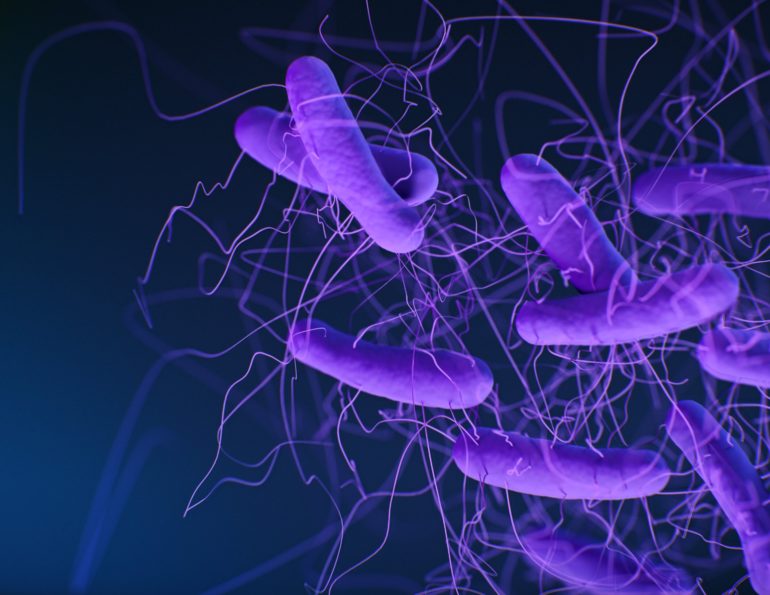Research led by scientists from UCLA and Harvard University has uncovered details about how the bacterium Clostridioides difficile causes excessive inflammation in the gut that can lead to potentially deadly colitis. Studying C. difficile toxin A, one of two toxins released by the bacterium, the researchers produced two key findings.
They pinpointed which part of the toxic protein can permeate cell membranes to gain entry to cellular structures called endosomes, demonstrating that even fragments of the protein that contain that key segment are capable of accessing endosomes.
In addition, they revealed how the toxin molecule causes inflammation, which has been a long-standing mystery because such molecules are generally quickly digested in the gut. The scientists found that toxin A—and surprisingly even fragments of the toxin—can organize DNA into ordered crystalline particles that amplify an immune response by binding to multiple TLR9 receptors, which are normally part of the body’s early detection system for microbial DNA. The findings demonstrate that this mechanism causes the body’s natural defenses to produce excessive inflammation.
Infection from C. difficile in the gut can cause life-threatening colitis, with nearly 500,000 cases and 29,000 deaths in the U.S. alone each year, according to the Centers for Disease Control and Prevention.
Older patients who have been treated with antibiotics are at particular risk from C. difficile, which is resistant to a number of antibiotics. The bacterium is usually harmless when it is kept in check by symbiotic microbes normally found in the human gut. However, when the gut microbiome is suppressed by antibiotics, C. difficile can take over: Its toxins can spur a severe autoimmune response that causes symptoms such as diarrhea, cramping, fever and nausea.
The research combined machine learning, experiments with a technique called small-angle X-ray scattering at the Stanford Synchrotron Radiation Lightsource (a Department of Energy laboratory), and experiments using human cell lines, mouse cell lines and mice.
Understanding the mechanisms by which C. difficile’s toxins trigger intestinal inflammation is an important step toward developing methods for treating or preventing infection by the bacterium.
The study is published online in the journal Gastroenterology.
Modified yeast used to treat common bacterial intestinal infection
More information:
Xinhua Chen et al. Clostridioides difficile Toxin A Remodels Membranes and Mediates DNA Entry Into Cells to Activate Toll-Like Receptor 9 Signaling, Gastroenterology (2020). DOI: 10.1053/j.gastro.2020.08.038
Provided by
University of California, Los Angeles
Citation:
Study reveals new details about how bacterial toxins cause life-threatening colitis (2021, January 8)
retrieved 10 January 2021
from https://medicalxpress.com/news/2021-01-reveals-bacterial-toxins-life-threatening-colitis.html
This document is subject to copyright. Apart from any fair dealing for the purpose of private study or research, no
part may be reproduced without the written permission. The content is provided for information purposes only.



